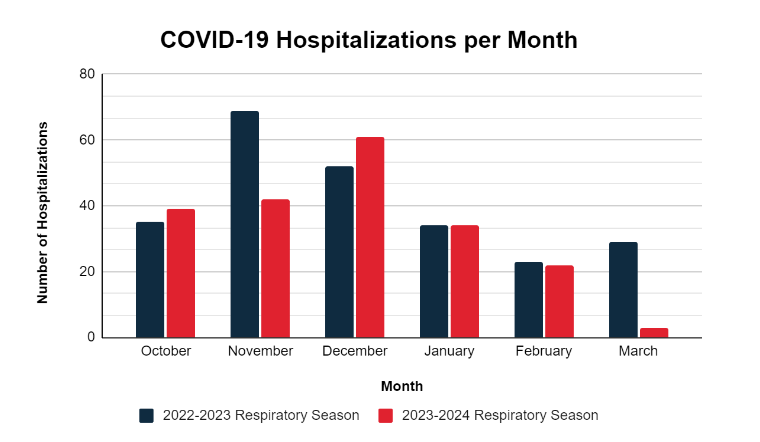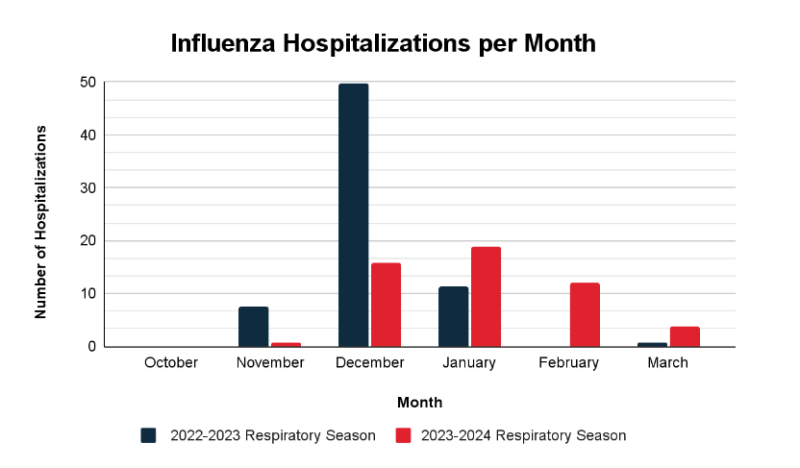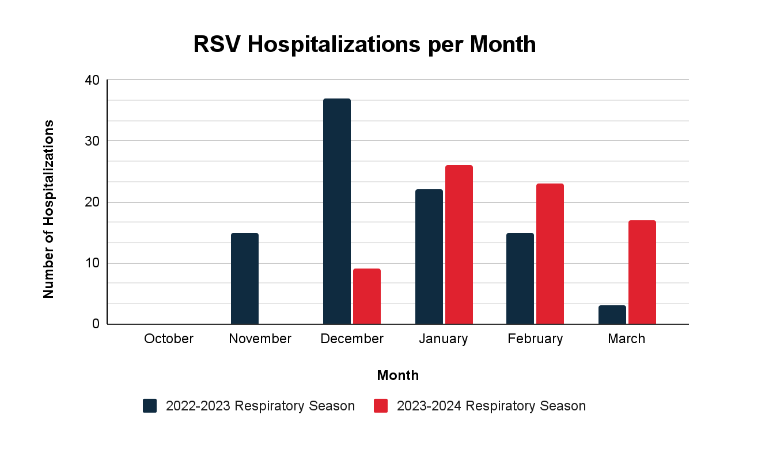Respiratory virus season in review, fewer hospitalizations this season
As peak respiratory virus season winds down, our disease surveillance team is analyzing trends from the season. This season we saw fewer hospitalizations overall compared to the 2022-2023 season, with a peak in activity happening in December and January. We track viral respiratory illness hospitalizations to gauge the severity of each illness as it spreads through the community.

“Once again, our cold-and-flu season included these three viruses circulating at the same time,” said Epidemiologist Kathleen Satterfield. “All three of these viruses can lead to hospitalizations, and we’re very mindful of those who are most at risk for the most serious outcomes of these illnesses.”

COVID-19 Trends
Mesa County did see significantly more hospitalizations related to COVID-19 than the other viruses. While COVID-19 is still active throughout the year, it is believed that it will begin to exhibit seasonal respiratory patterns in the future, meaning that cases and hospitalization rates will increase during the fall and winter months. The hospitalization rates for the last two respiratory seasons follow a similar pattern, in that they peak between November and December and steadily decrease as the season progresses.

Influenza Trends
Mesa County observed fewer influenza-related hospitalizations this season in contrast to the 2022-2023 season. During the previous season, there was a marked increase in hospitalizations in December 2022; however, we did not witness a similar trend this year.

The most common types of influenza are types influenza A and B. These two viruses are the primary causes of seasonal influenza epidemics. Both type A and type B influenza have been widespread in Mesa County this flu season. Type A was dominant in the early stages, with type B becoming more prominent as the season progressed.

RSV Trends
Throughout the busiest months of this respiratory season, we've seen ongoing reports of RSV-related hospitalizations, but they've been fewer and more spread out compared to last year's respiratory season.

Prevention Remains Key
“Prevention is important year-round, not just during peak respiratory virus season. The best ways to stay healthy remain the same- stay home when you are sick, wash your hands frequently, and stay up to date on vaccines,” said Satterfield.
Our disease surveillance team will continue to monitor illness trends in our community. COVID-19 vaccines remain available in our Public Health Clinic. Call us at 970-248-6900 to schedule an appointment.
Media Inquiries, contact:
Sarah Gray
Public Health
Communication and Marketing Manager
970-697-4611

